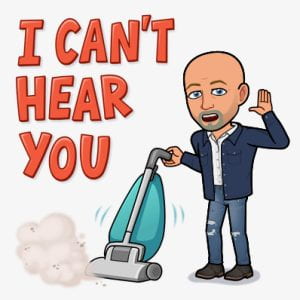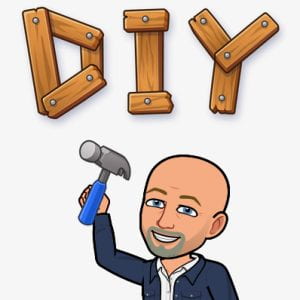 “I just don’t think the people downtown have any clue what we do over here!” Stop me if you’ve heard this one before. I’m sure I have said it before, except they weren’t downtown, they were across town. “Just let us run our buildings, we’ve got this.” Another one that commonly comes up when we talk about the communication between schools and district office personnel. Honestly, it isn’t much different that some of the statements made by teachers about their administrators, or possibly even kids about their teachers. It isn’t about the location, the office, or the title. It is all about communication.
“I just don’t think the people downtown have any clue what we do over here!” Stop me if you’ve heard this one before. I’m sure I have said it before, except they weren’t downtown, they were across town. “Just let us run our buildings, we’ve got this.” Another one that commonly comes up when we talk about the communication between schools and district office personnel. Honestly, it isn’t much different that some of the statements made by teachers about their administrators, or possibly even kids about their teachers. It isn’t about the location, the office, or the title. It is all about communication.
Effective communication is the cornerstone of any successful organization. It ensures that goals are understood, strategies are aligned, and everyone is moving in the same direction. However, despite its importance, communication breakdowns between different levels of leadership can often occur, leading to inefficiencies, misunderstandings, and frustration. In this blog post, we’ll explore the top five reasons why communication breaks down between levels of leadership and what can be done to address these issues.
 1. Lack of Clarity in Expectations: One of the primary reasons for communication breakdowns is a lack of clarity in expectations. When expectations are not clearly defined, misunderstandings can arise, leading to confusion and frustration. This is particularly common between different levels of leadership, where assumptions may be made about what is expected without explicit communication.
1. Lack of Clarity in Expectations: One of the primary reasons for communication breakdowns is a lack of clarity in expectations. When expectations are not clearly defined, misunderstandings can arise, leading to confusion and frustration. This is particularly common between different levels of leadership, where assumptions may be made about what is expected without explicit communication.
Solution: To address this issue, leaders should strive to clearly define expectations and communicate them effectively to all levels of the organization. This can be achieved through regular meetings, written communication, and setting SMART (Specific, Measurable, Achievable, Relevant, Time-bound) goals.
 2. Differences in Communication Styles: Another common reason for communication breakdowns between levels of leadership is differences in communication styles. Each individual may have their own preferred method of communication, whether it’s face-to-face meetings, email, or instant messaging. When these styles clash, it can lead to misunderstandings and misinterpretations.
2. Differences in Communication Styles: Another common reason for communication breakdowns between levels of leadership is differences in communication styles. Each individual may have their own preferred method of communication, whether it’s face-to-face meetings, email, or instant messaging. When these styles clash, it can lead to misunderstandings and misinterpretations.
Solution: To overcome differences in communication styles, leaders should strive to be flexible and adapt their communication approach to suit the preferences of their team members. This may involve using a combination of communication methods and being mindful of the preferred communication style of each individual.
 3. Lack of Feedback Mechanisms: Effective communication is a two-way street, yet many organizations fail to provide adequate feedback mechanisms for employees to express their thoughts, concerns, and suggestions. Without these mechanisms in place, employees may feel unheard and disengaged, leading to communication breakdowns between levels of leadership.
3. Lack of Feedback Mechanisms: Effective communication is a two-way street, yet many organizations fail to provide adequate feedback mechanisms for employees to express their thoughts, concerns, and suggestions. Without these mechanisms in place, employees may feel unheard and disengaged, leading to communication breakdowns between levels of leadership.
Solution: Leaders should create an environment where feedback is encouraged and valued. This can be achieved through regular check-ins, anonymous suggestion boxes, and open-door policies. By actively seeking feedback from employees, leaders can gain valuable insights into areas for improvement and foster a culture of open communication.
 4. Hierarchical Barriers: Hierarchical structures within organizations can create barriers to effective communication between different levels of leadership. Employees may feel intimidated or hesitant to communicate with higher-level leaders, leading to a lack of transparency and trust.
4. Hierarchical Barriers: Hierarchical structures within organizations can create barriers to effective communication between different levels of leadership. Employees may feel intimidated or hesitant to communicate with higher-level leaders, leading to a lack of transparency and trust.
Solution: To break down hierarchical barriers, leaders should actively work to create a culture of openness and transparency within the organization. This may involve holding regular town hall meetings, implementing open-door policies, and fostering relationships between employees and leaders at all levels.
 5. Information Silos: In many organizations, information is siloed within departments or teams, making it difficult for leaders at different levels to access the information they need to make informed decisions. This can lead to misunderstandings and miscommunication between levels of leadership.
5. Information Silos: In many organizations, information is siloed within departments or teams, making it difficult for leaders at different levels to access the information they need to make informed decisions. This can lead to misunderstandings and miscommunication between levels of leadership.
Solution: Leaders should work to break down information silos by implementing systems and processes that promote collaboration and information sharing across departments. This may involve using project management tools, establishing cross-functional teams, and encouraging knowledge sharing initiatives.
 Ultimately, communication breakdowns between levels of leadership can have serious implications for organizational success. By addressing the root causes of these breakdowns and implementing strategies to improve communication, leaders can foster a culture of openness, trust, and collaboration within their organizations. By doing so, they can ensure that everyone is working towards common goals and driving the organization forward.
Ultimately, communication breakdowns between levels of leadership can have serious implications for organizational success. By addressing the root causes of these breakdowns and implementing strategies to improve communication, leaders can foster a culture of openness, trust, and collaboration within their organizations. By doing so, they can ensure that everyone is working towards common goals and driving the organization forward.
Have a #RoadToAwesome week
Darrin
A special release of the Leaning into Leadership podcast from Wednesday of this week had Dominic Armano and Todd Bloomer joining me for the second episode in a new, ongoing series where we answer your pressing educational leadership questions. This time we are sharing strategies to discuss the undiscussable. Get it on YouTube right here.
 Tune in this Sunday to “Leaning into Leadership” where my guest Kristina Mattis joins to talk about her amazing new book on guiding change in education.
Tune in this Sunday to “Leaning into Leadership” where my guest Kristina Mattis joins to talk about her amazing new book on guiding change in education.
Need some help? Got a question? Reach out, let’s talk.
Learn more and sign up for our weekly newsletter, loaded with awesome content at roadtoawesome.net
Make sure you subscribe (button on the left) so you don’t miss any future posts.
Looking for that awesome speaker with an incredible message to build your staff culture? Look no further – connect with me here

Be First to Comment